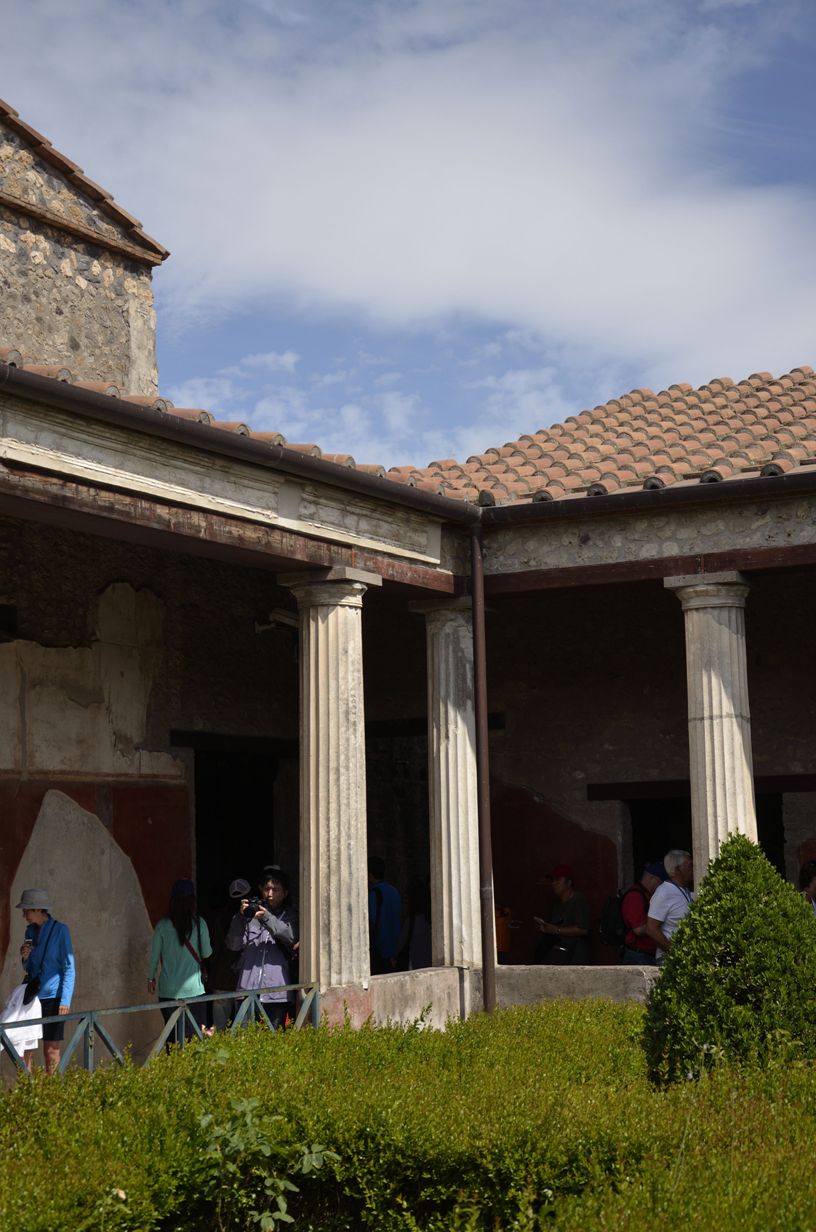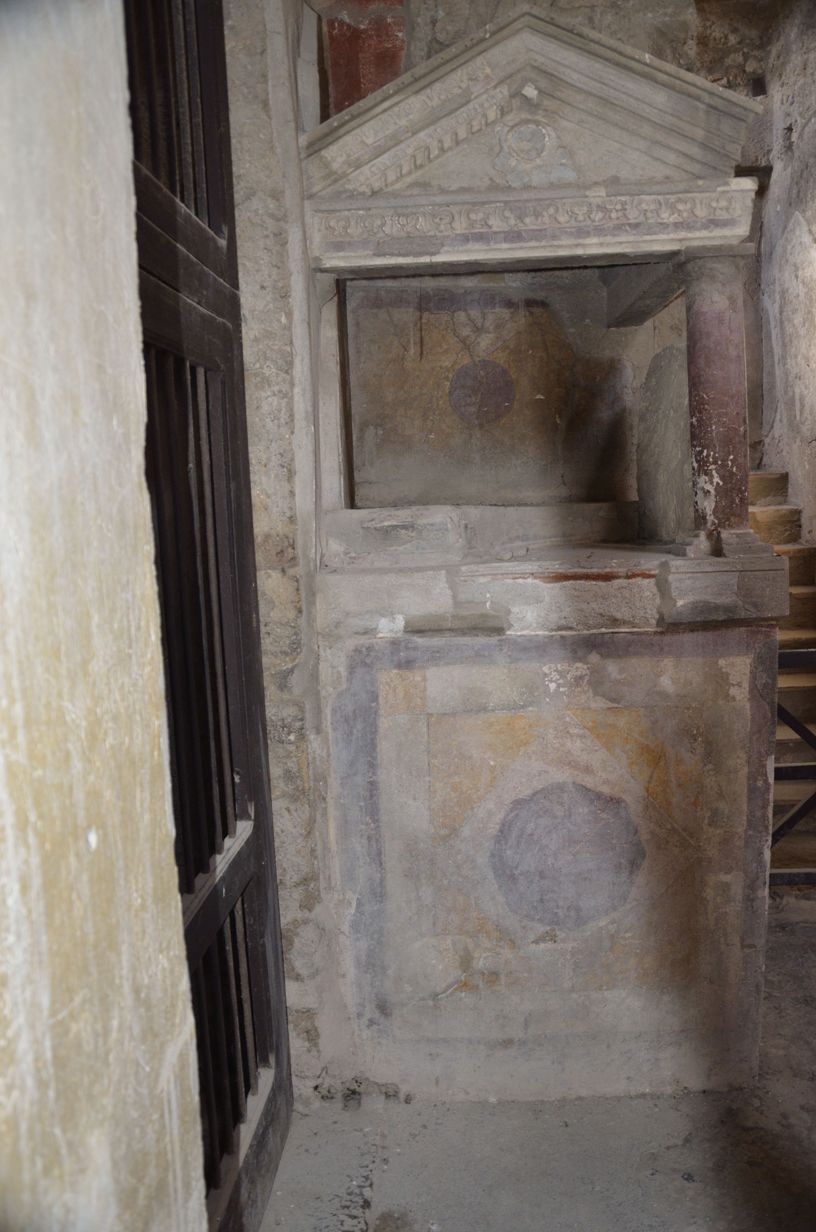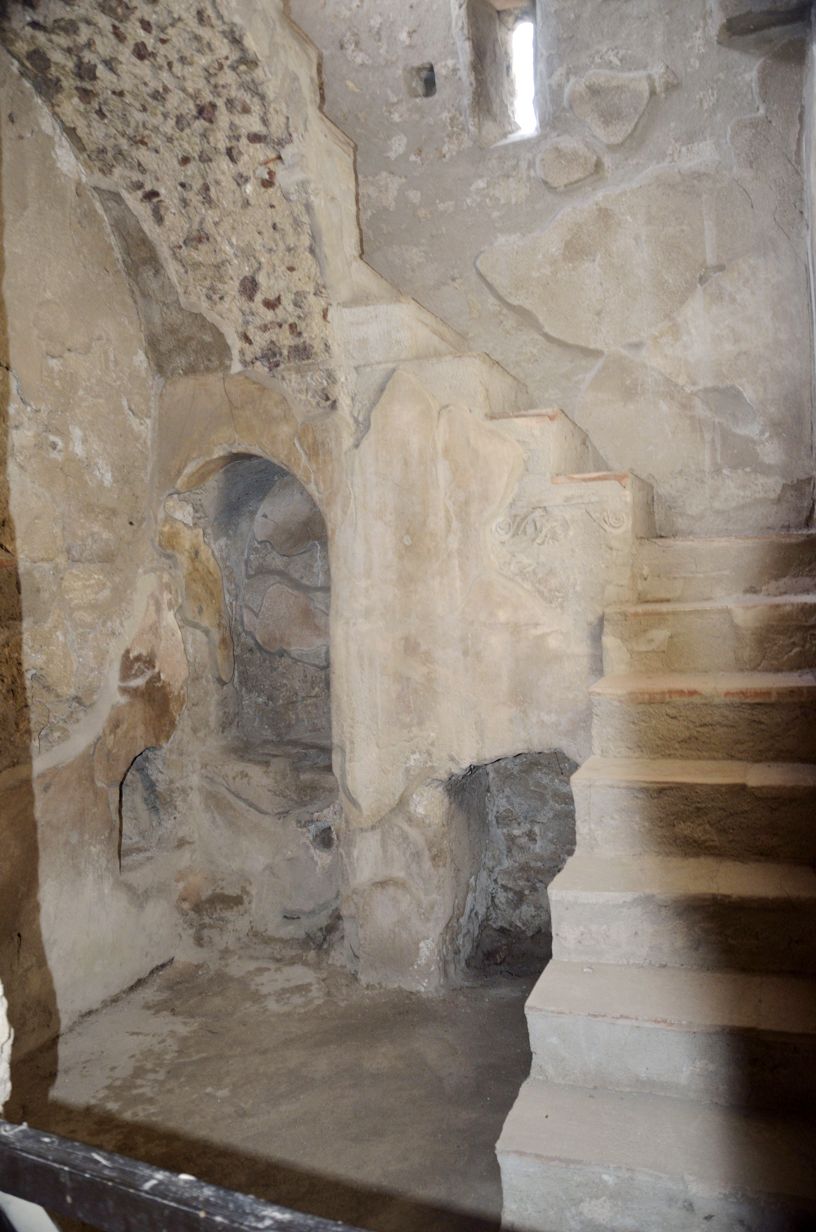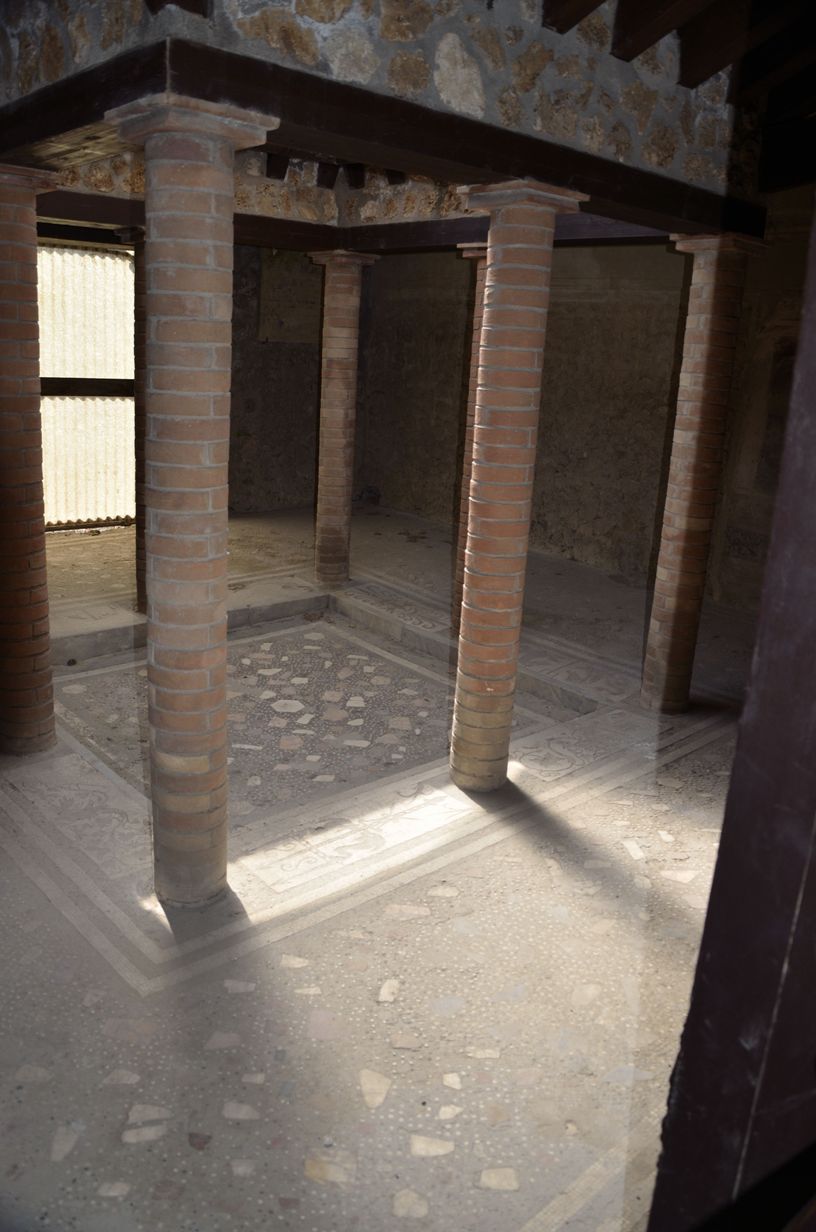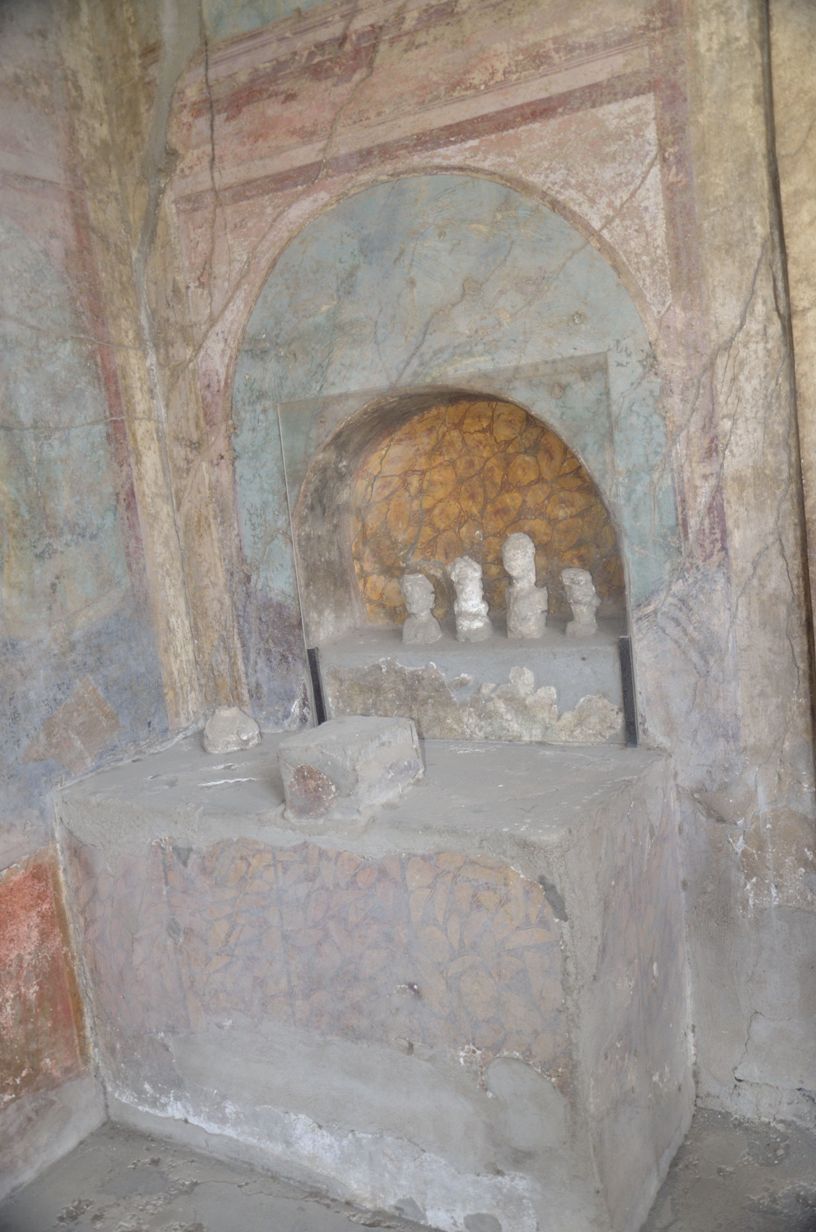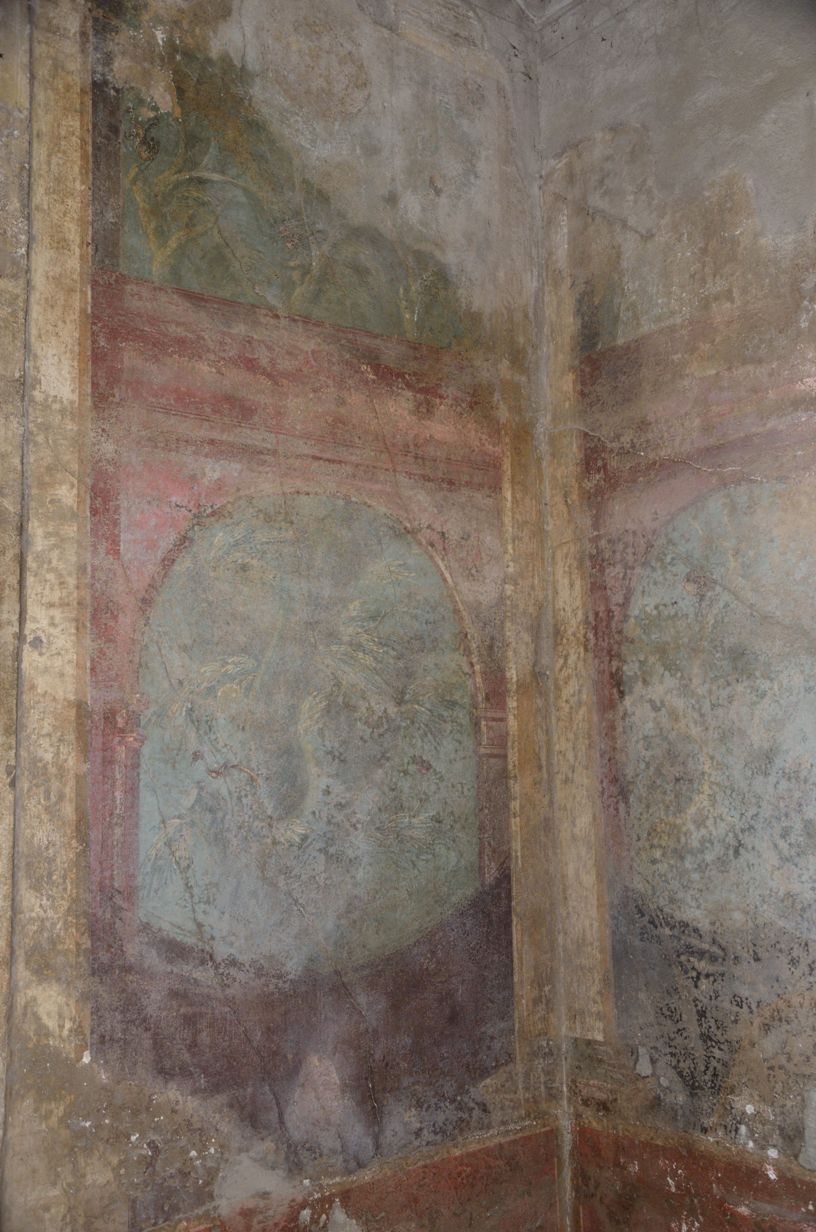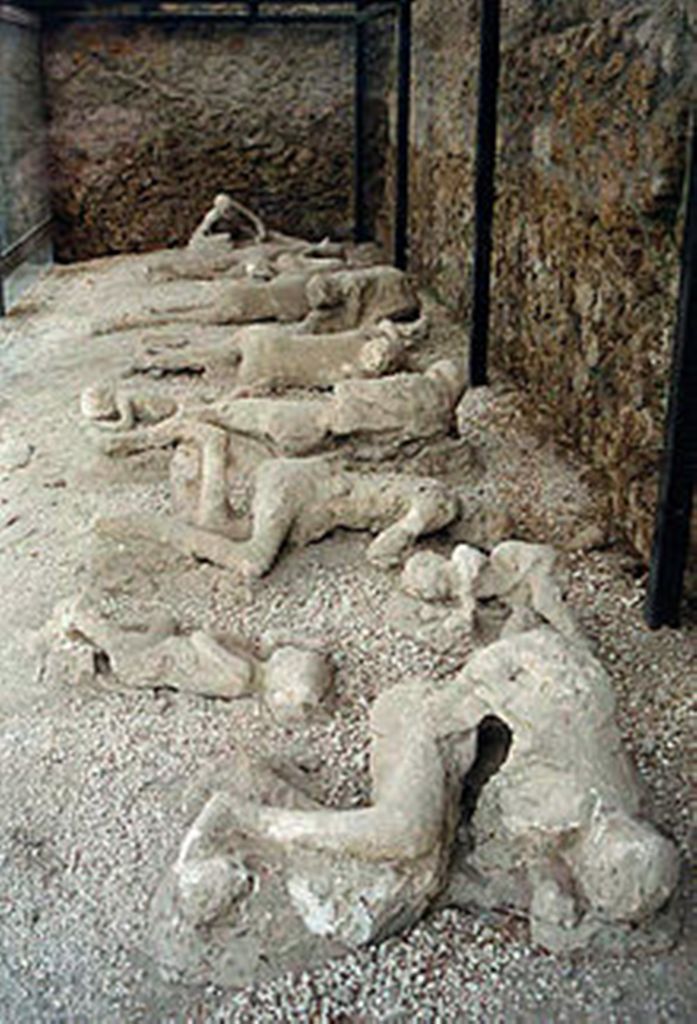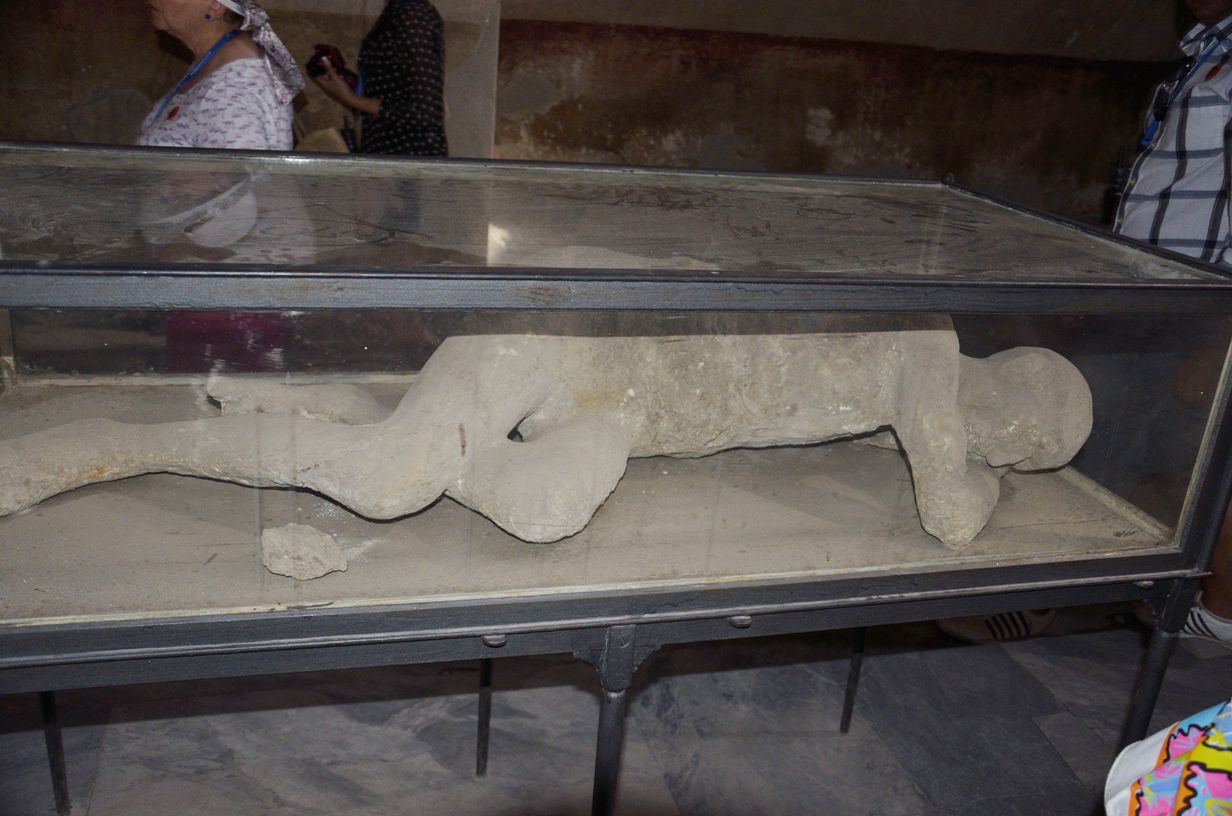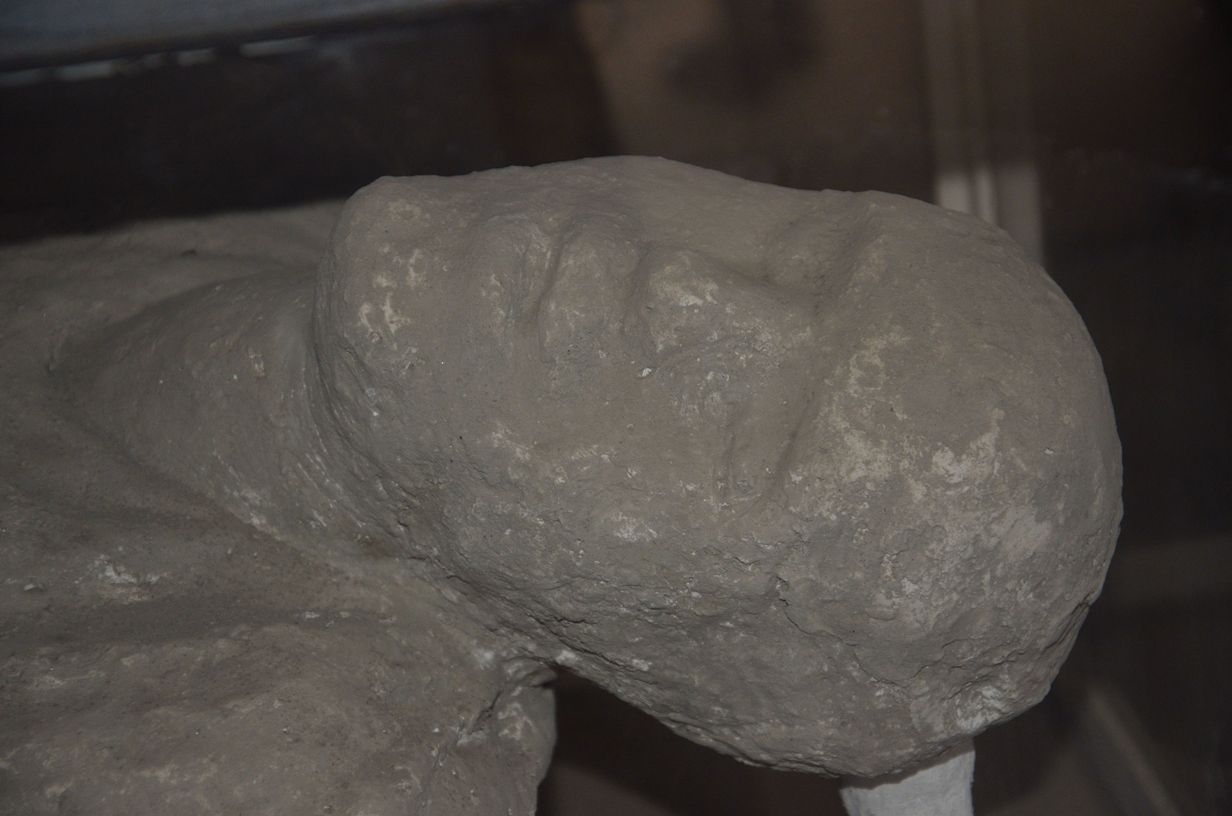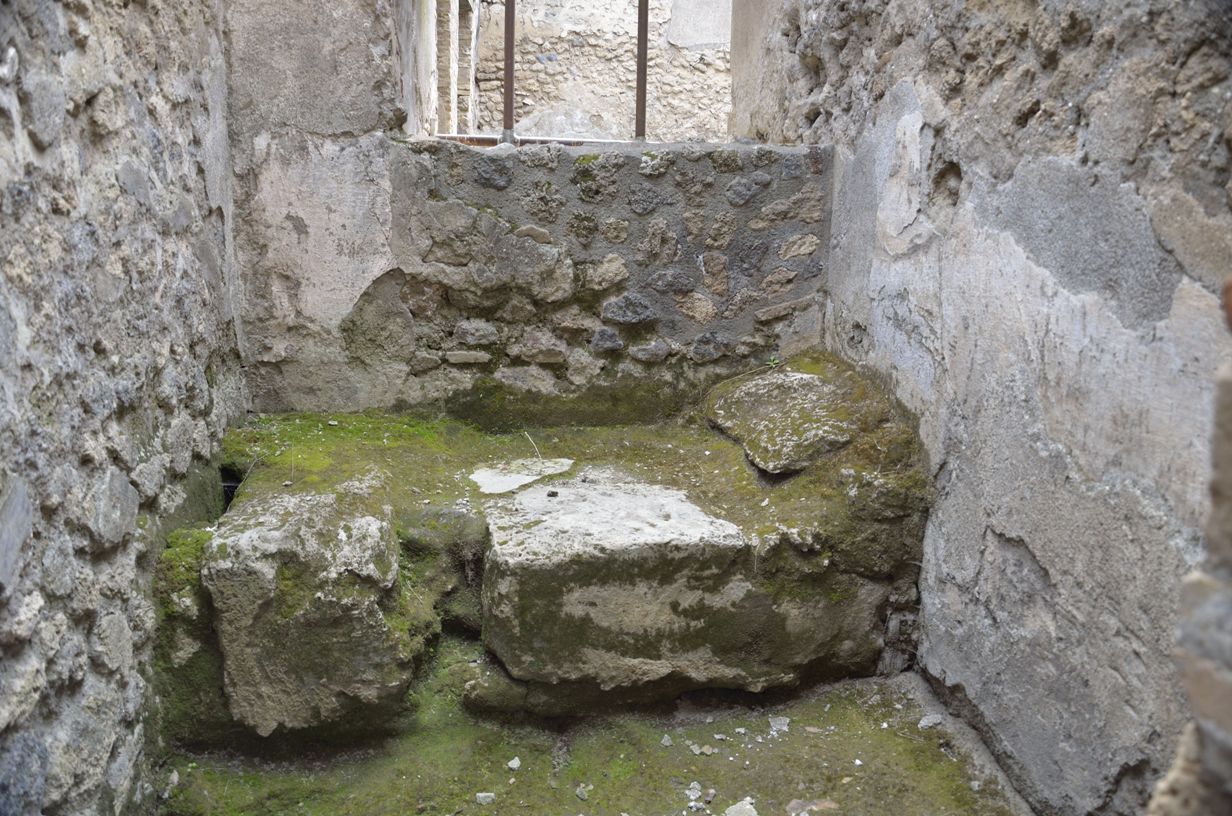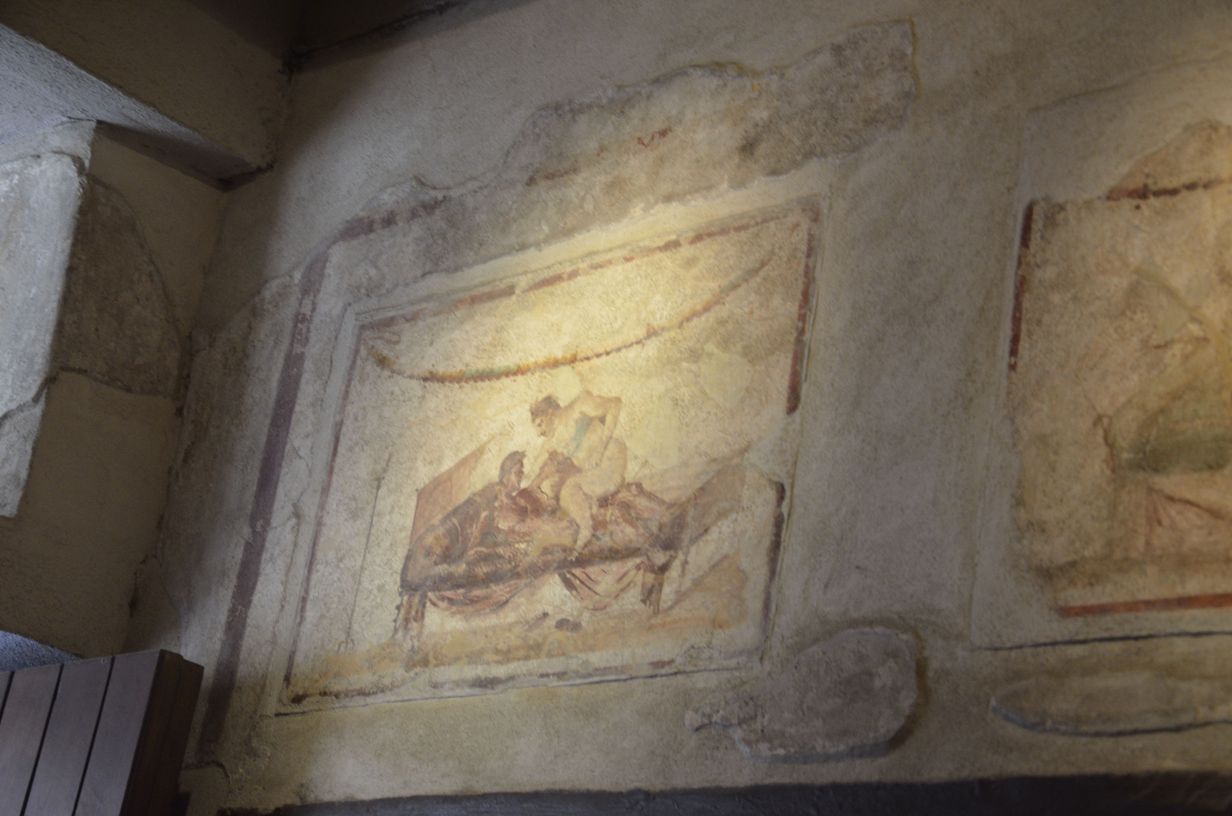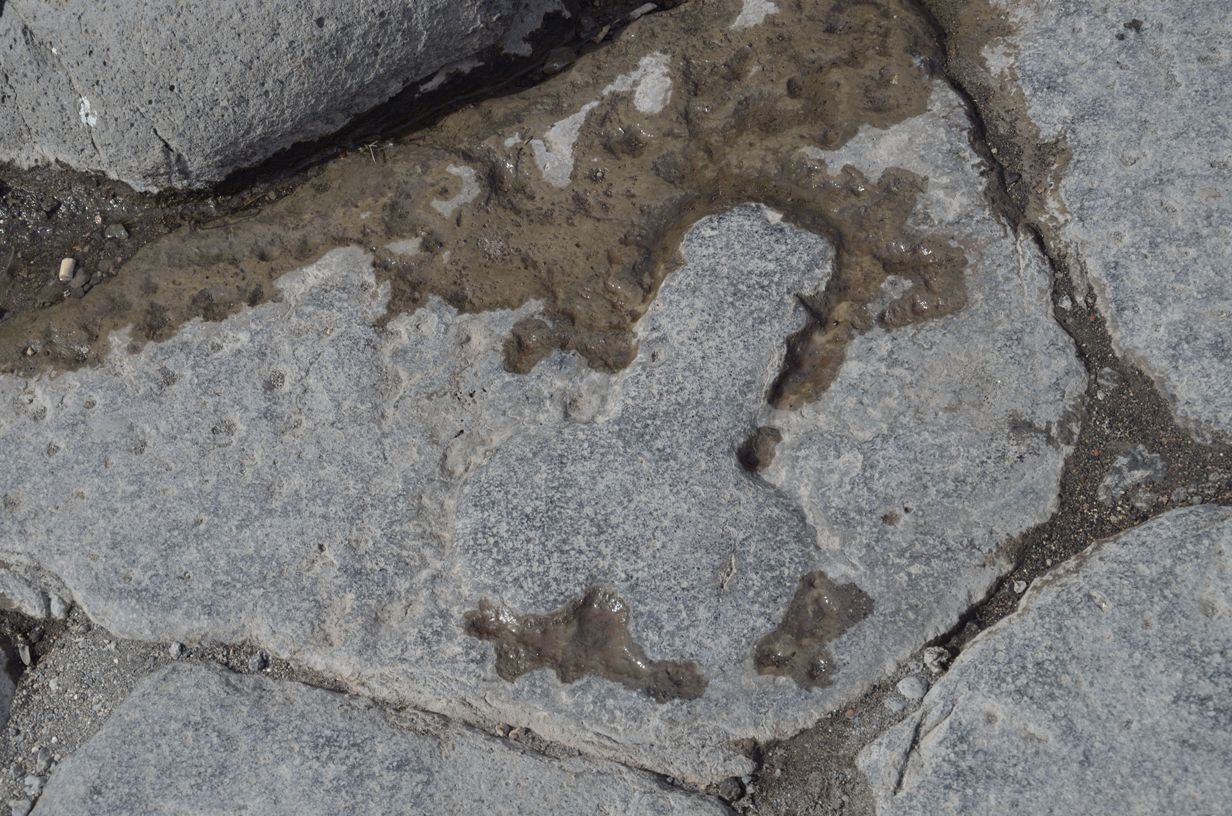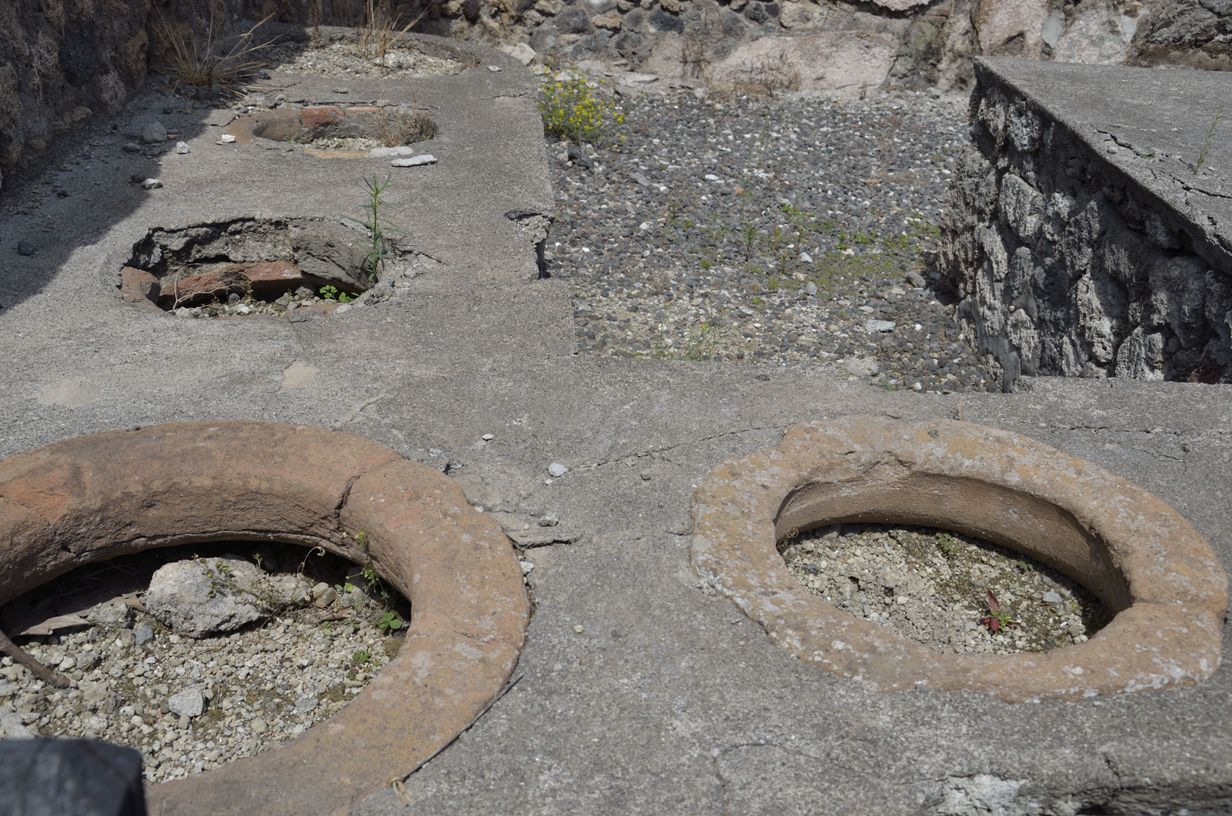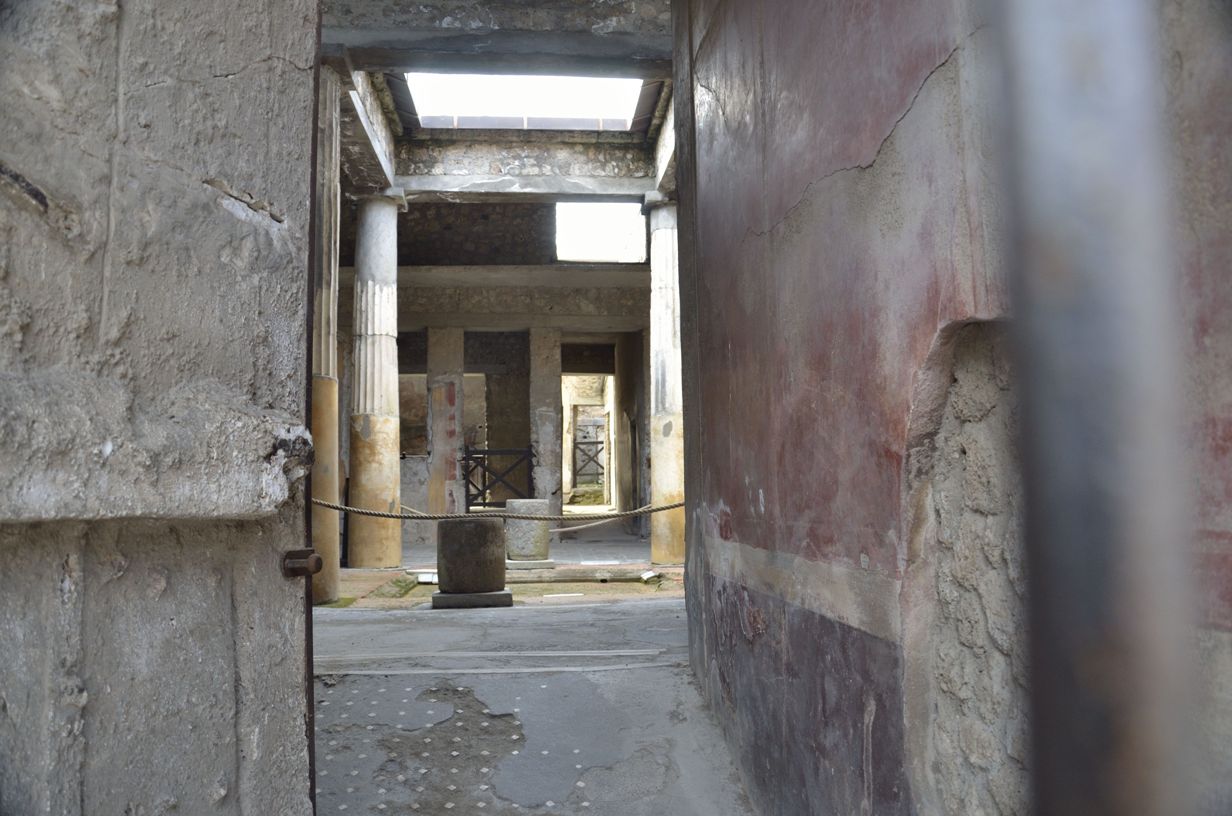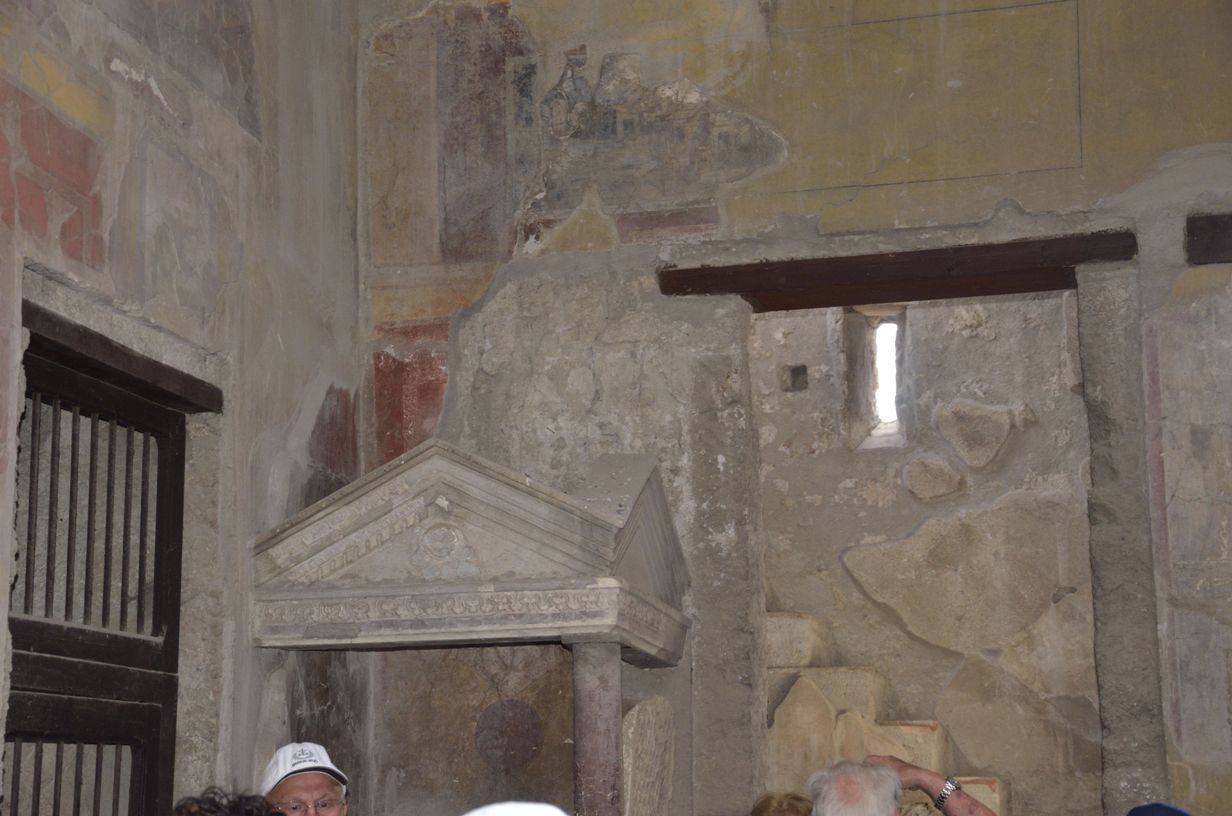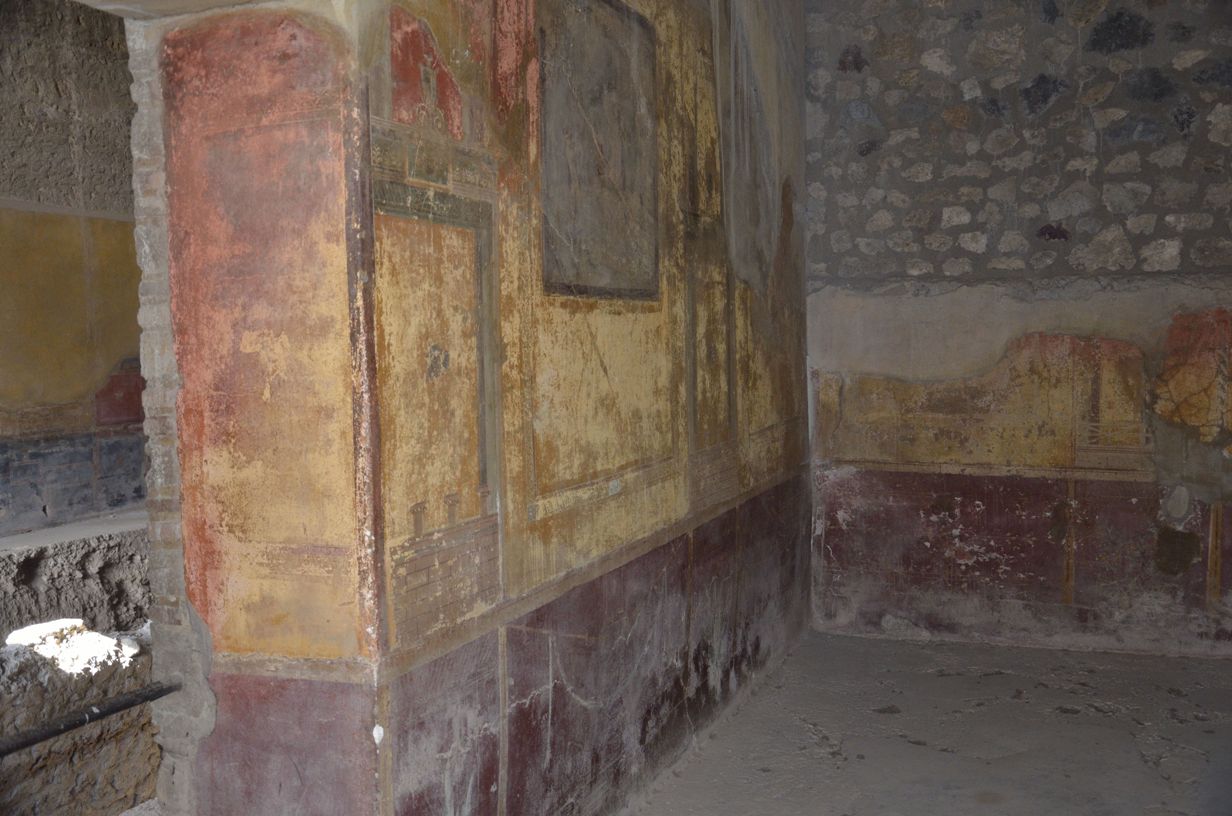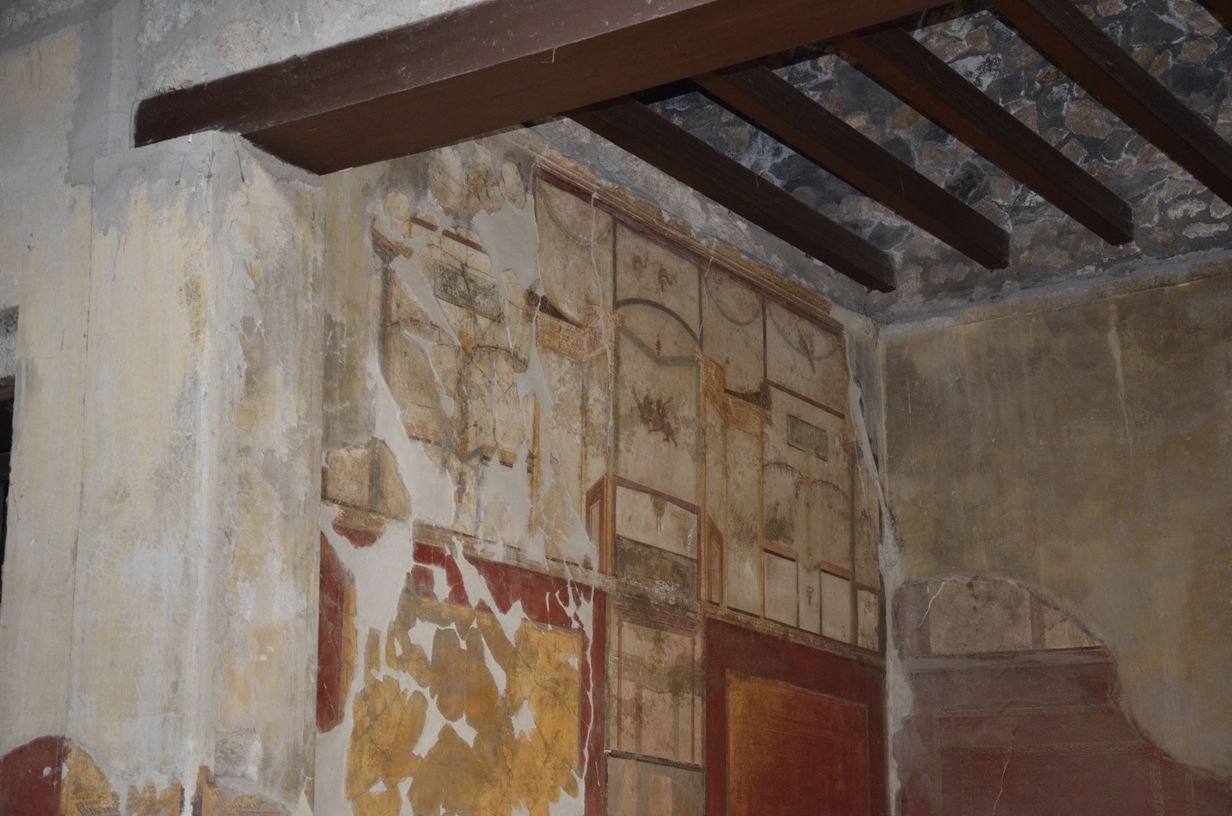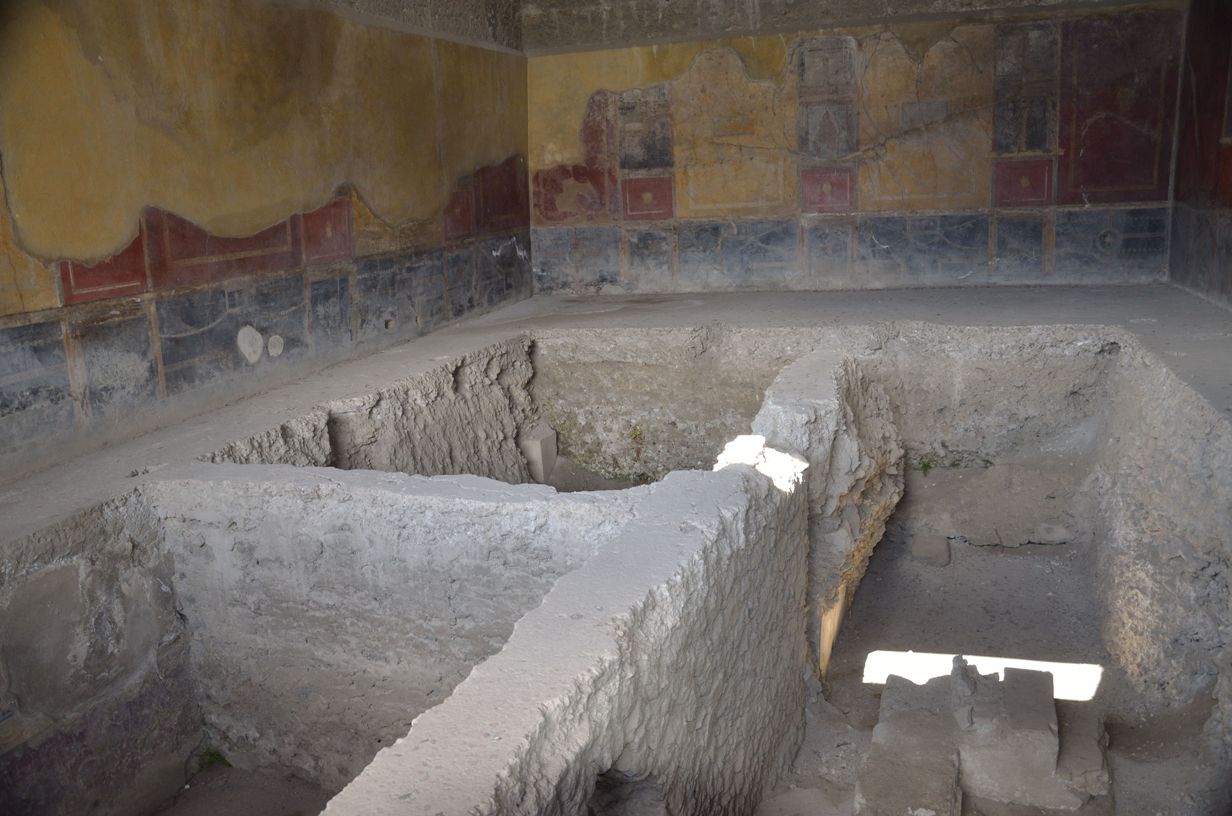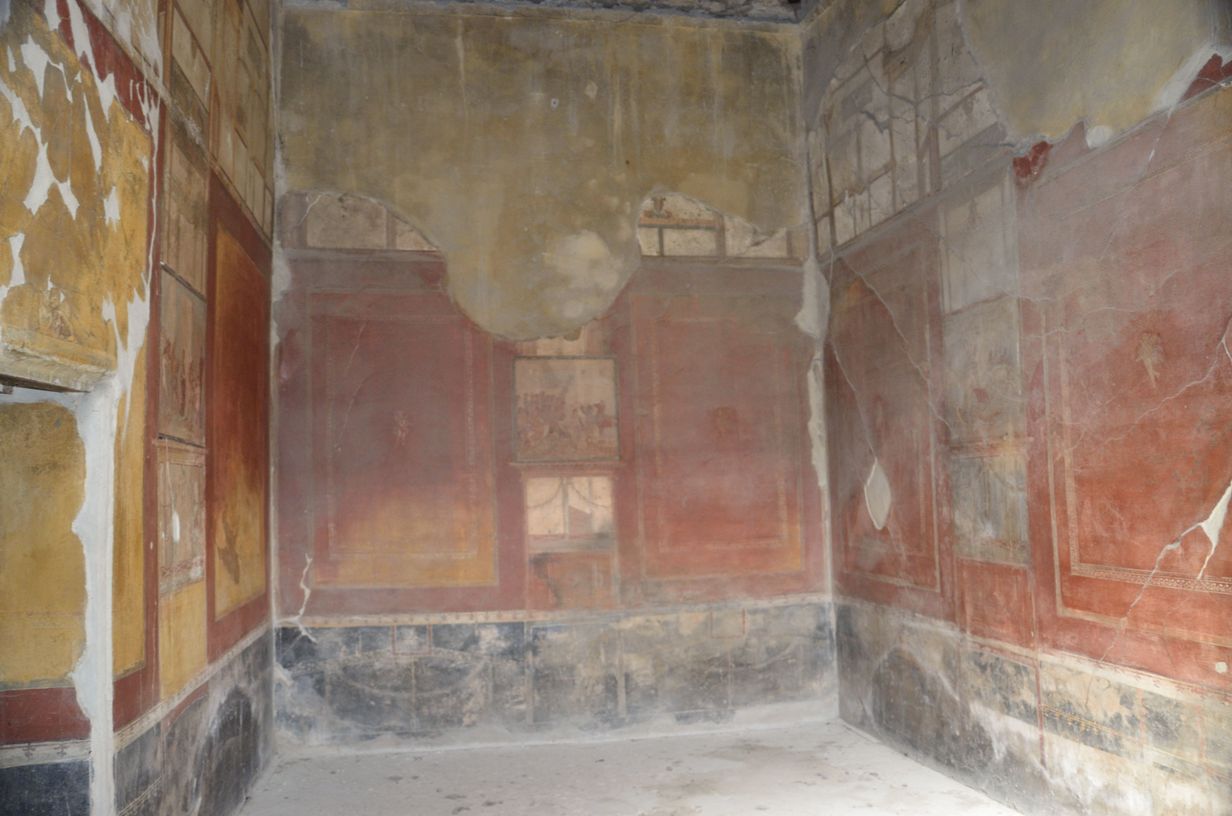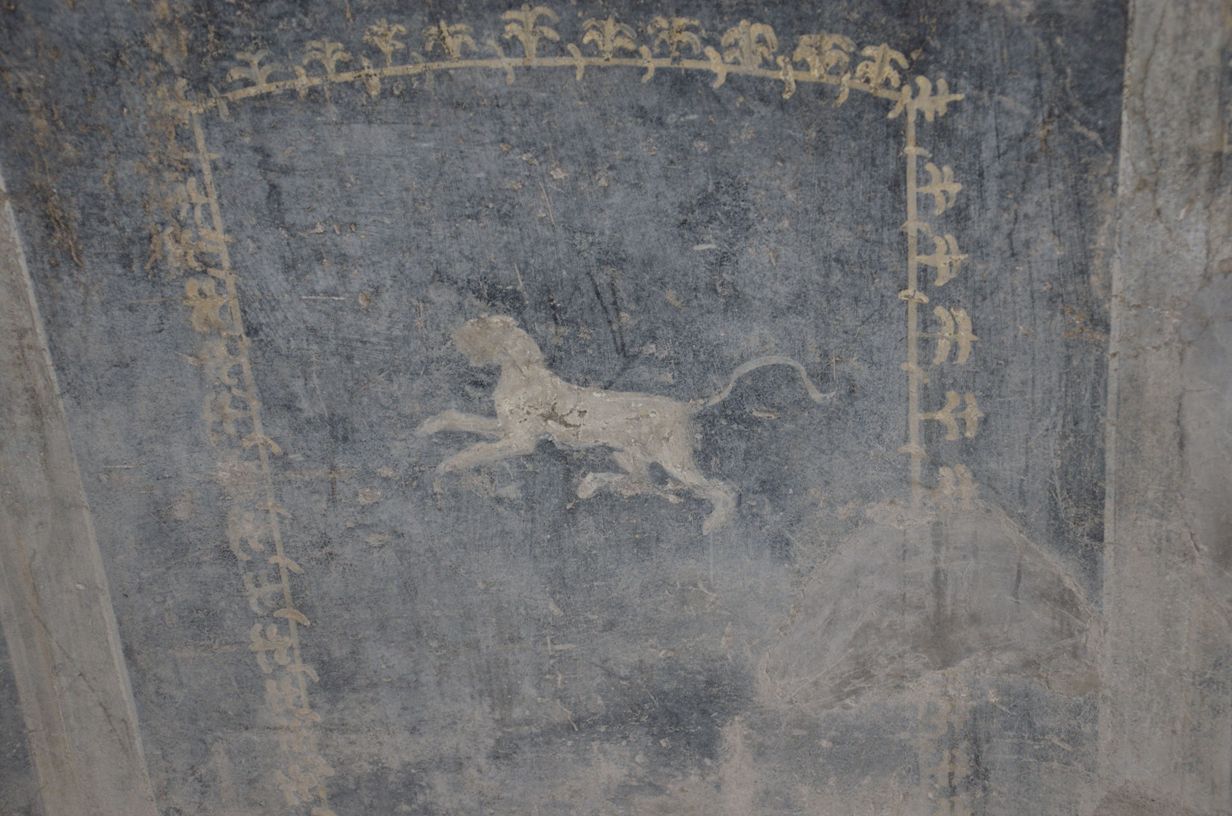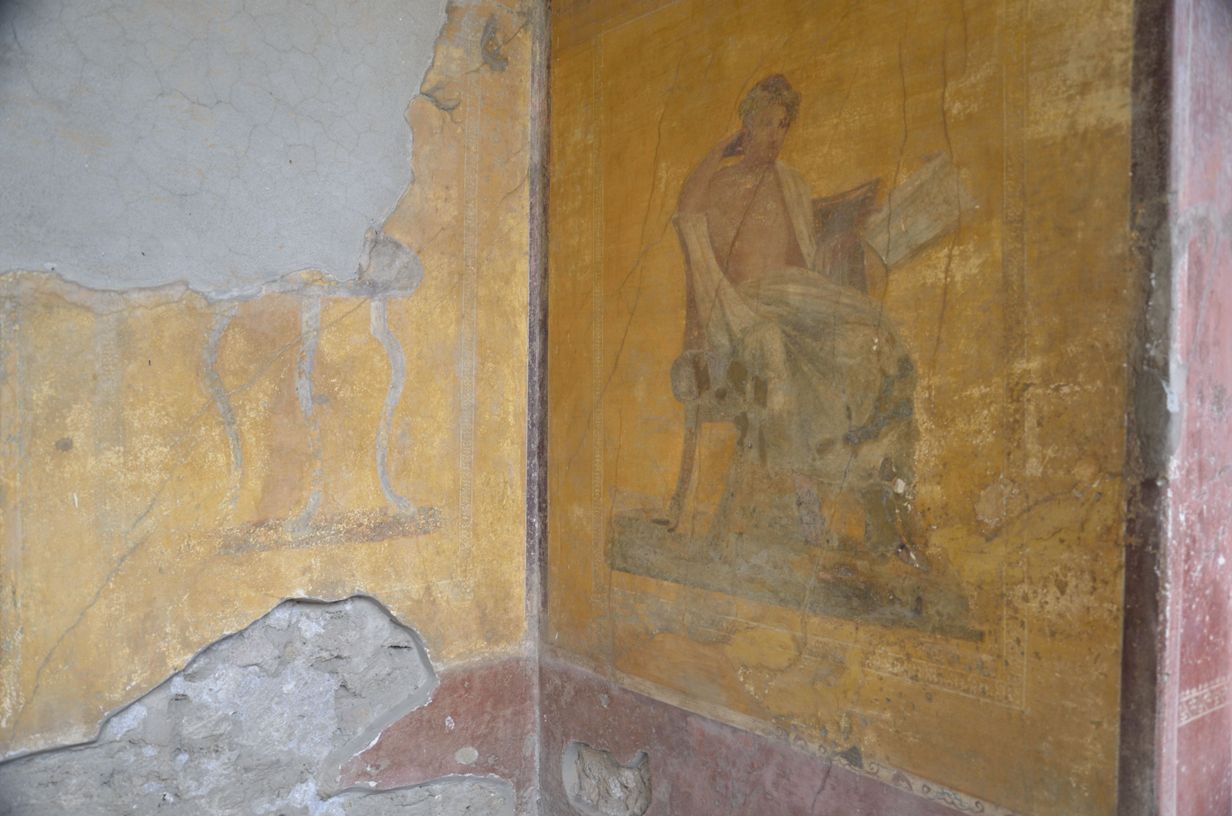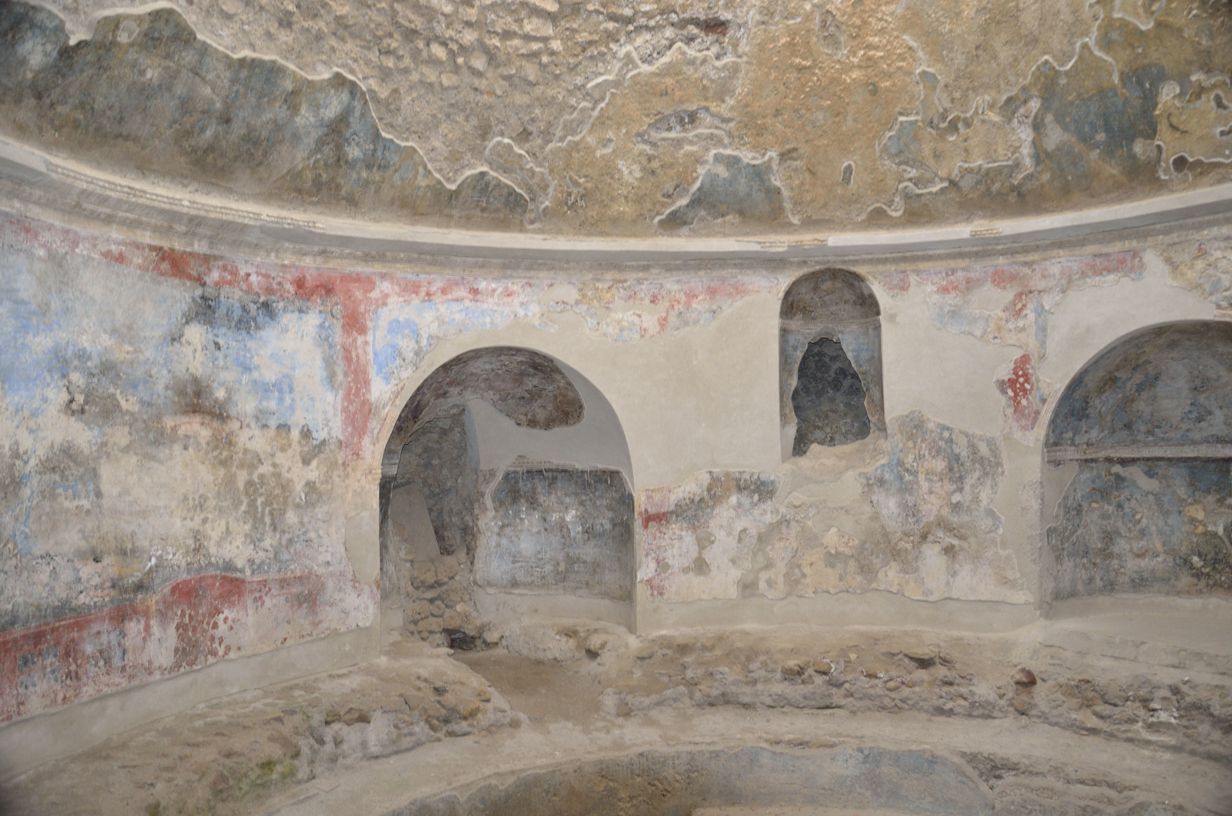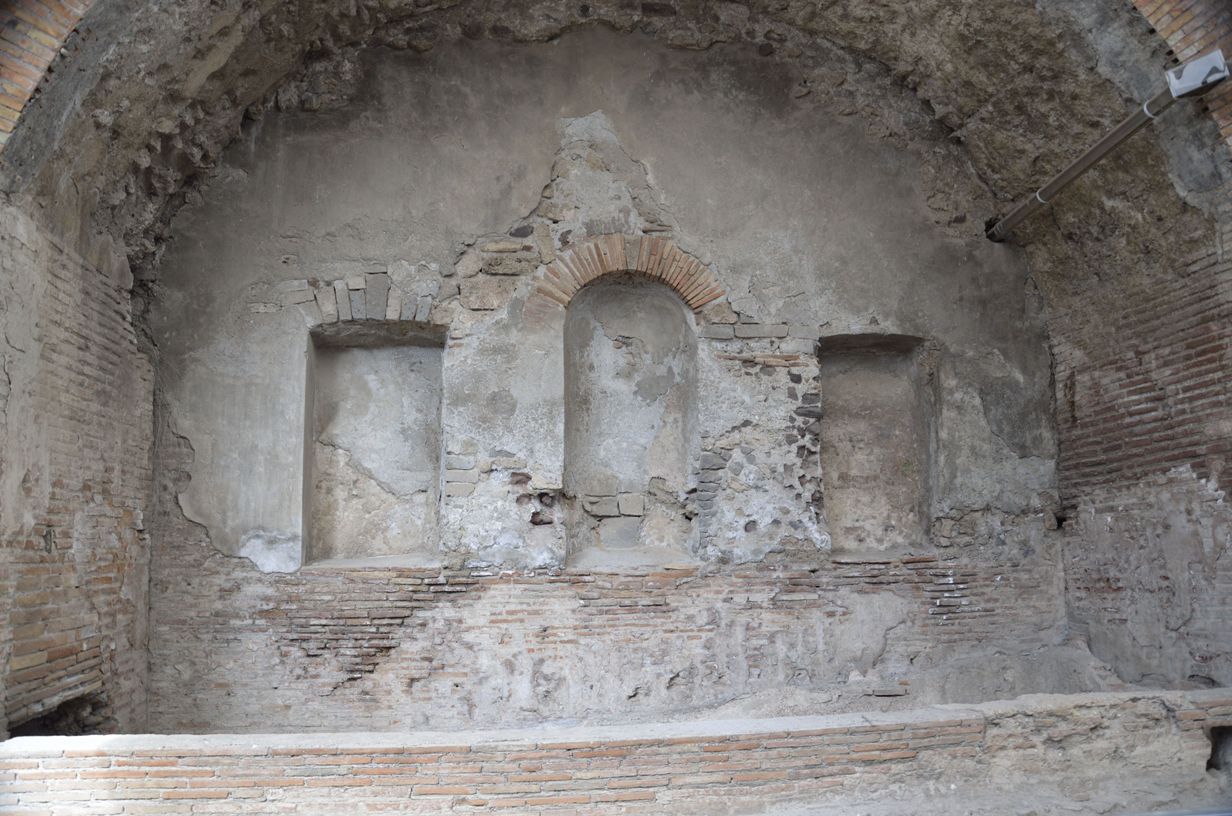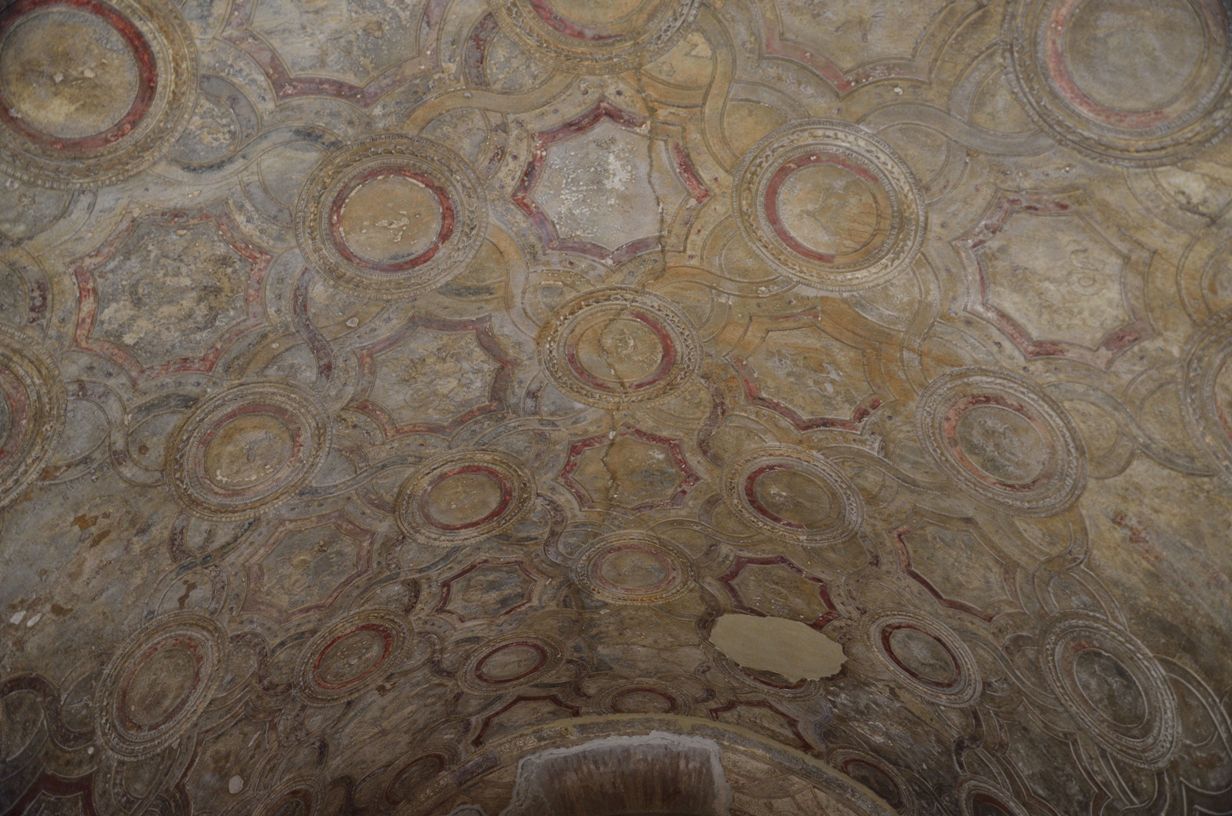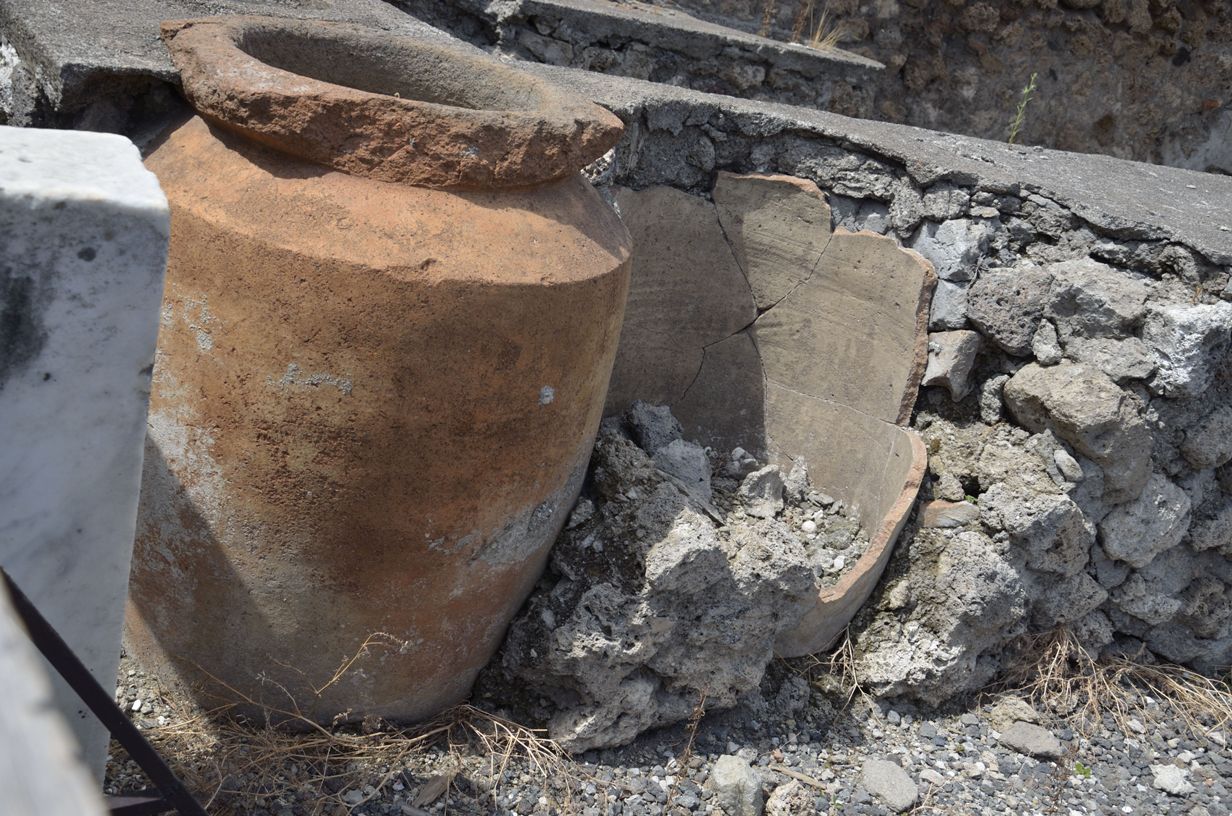Victim
Head shot
Brothel Bed
Brothel Wall Pictures
Directions to Brothel
Fast Food Bar
Private Hallway
Inside Wealthy Home
Painted Walls
Private Baths
Bedroom
Lion Wall Painting
Public Roman Bath
Public Sauna=
Original Ceiling
Clay Water Carriers
Notes
On August 24, 79 Mount Vesuvius literally blew its top, spewing tons of molten ash, pumice and sulfuric gas miles into the atmosphere. A "firestorm" of poisonous vapors and molten debris engulfed the surrounding area suffocating the inhabitants of the neighboring Roman resort cities of Pompeii, Herculaneum and Stabiae.
Tons of falling debris filled the streets until nothing remained to be seen of the once thriving communities. The cities remained buried for almost 1700 years until excavation began in 1748 following the discovery of the top of a temple protruding through the pumice. These excavations continue today and provide insight into life during the Roman Empire. © Copyright 2008 Write Sounds Entertainment, Inc. All Rights Reserved.
